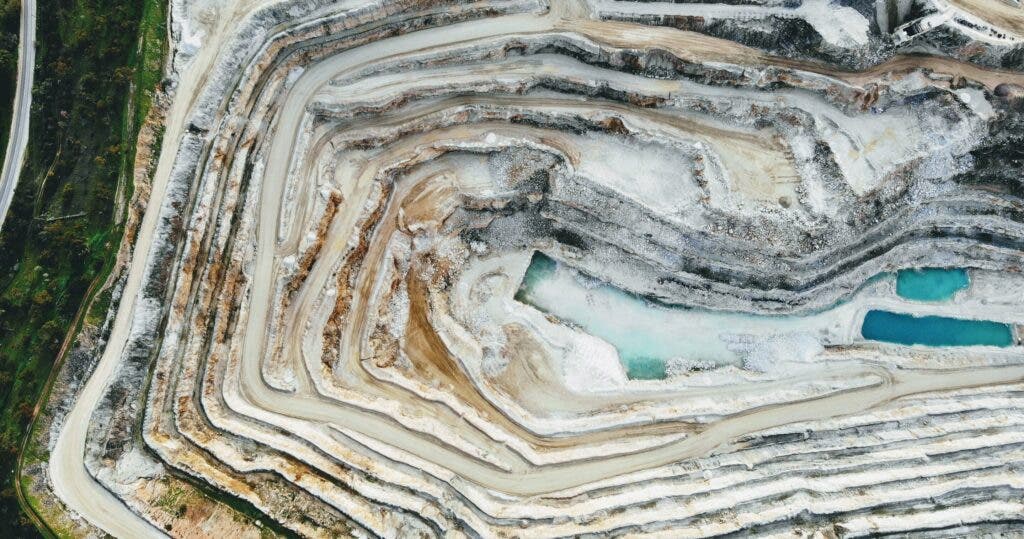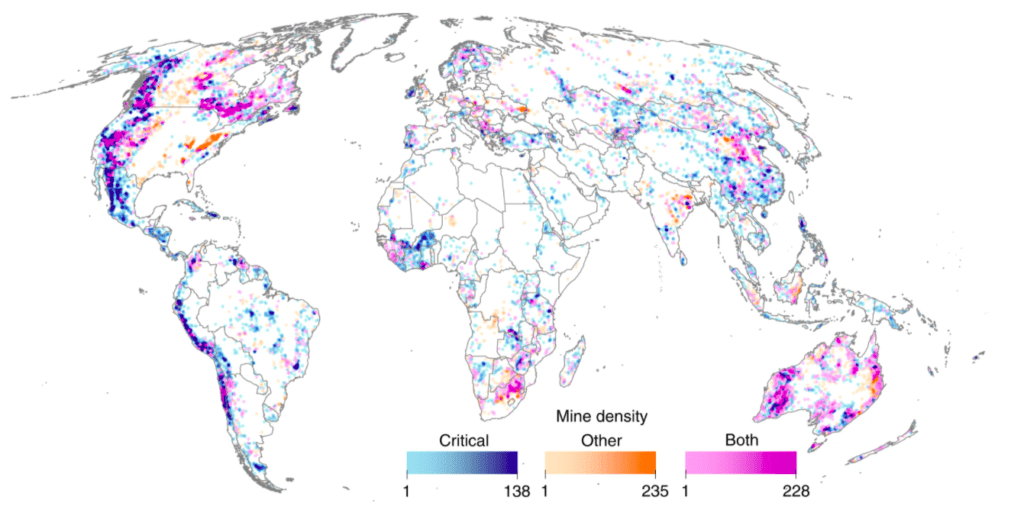The world is set for a gradual transition from fossil fuels to renewable energy to slow down climate change. But building wind turbines, solar panels, and other infrastructure requires mining for materials, which could damage many species and ecosystems if not done responsibly, according to a new study.

About 17% of the world’s energy consumption is currently met through renewable energy sources. Reducing greenhouse gas emissions further requires this proportion to increase, fast, but to do so more minerals will be needed, such as lithium for battery storage, zinc for geothermal energy, and copper for renewable technologies.
The World Bank estimated in a recent report that the production of such materials could increase by 500% by 2050. It said more than 3 billion tons of minerals and metals will be needed to build the wind, solar and geothermal power, and energy storage, needed to keep global warming below 2℃ this century.
A group of researchers from the University of Queensland mapped the world’s potential mining areas and how they overlap with biodiversity conservation sites. The analysis involved 62,381 pre-operational, operational, and closed mines targeting up to 40 different materials. They used a 50 km wide radius around each mining property

They found that 50 million km2 of Earth’s terrestrial land area (37%, excluding Antarctica) could potentially be impacted by mining. Most of these areas (82%) have materials needed for renewable energy production. Of this, 12% overlaps with protected areas, 7% with key biodiversity areas, and 14% with the remaining wilderness.
“Our study shows that mining the materials needed for renewable energy such as lithium, cobalt, copper, nickel and aluminum will create further pressure on the biodiversity located in mineral-rich landscapes,” Dr. Laura Sonter, lead author, said in a press release. “Almost 10% of all mining areas occur within currently protected sites.”
Following their results, Sonter and her team argued careful strategic planning is urgently required in order to ensure mining threats to biodiversity won’t do more damage than they’re meant to prevent.
Habitat loss and degradation currently threaten more than 80% of endangered species, while climate change directly affects 20%. While they couldn’t quantify habitat losses from future mining for renewable energy, the researchers argued that their study shows habitat loss could be a major issue going forward.
At the local scale, minimizing these impacts will require effective environmental impact assessments and management, Sonter and her team explain. All new mining projects should consider first avoiding biodiversity impacts where possible before allowing compensation activities elsewhere.
“There is an urgent need to understand the size of mining risks to biodiversity (climate change, and efforts to avert it) and strategically account for them in conservation plans and policies. Yet, none of these potential tradeoffs are seriously considered in international climate policies,” they wrote in the study.
The study was published in the journal Nature Communications.


